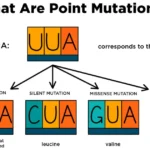Hey there! If you’ve ever wondered how modern medical research became so careful about treating people right, you’re in for an interesting story. Today, we’re diving into the Beecher article—a game-changer in the world of ethics in science. The big question on everyone’s mind is: “which of the following was the result of the beecher article?” We’ll unpack that step by step, but spoiler alert: it wasn’t just one thing. It sparked a whole wave of realizations and reforms that protect people in research even today. Whether you’re a student cramming for a test, a curious parent, or just someone who likes a good history lesson, I’ll keep this simple, friendly, and easy to follow. No jargon overload—I promise!
Let’s start at the beginning. Imagine it’s the 1960s. Medicine is booming with new drugs and treatments, but not everyone is playing fair. Doctors and scientists are testing stuff on patients without always asking permission or explaining risks. Enter Henry K. Beecher, a respected anesthesiologist from Harvard Medical School. In 1966, he wrote a bombshell article called “Ethics and Clinical Research,” published in the prestigious New England Journal of Medicine. Beecher wasn’t out to name and shame specific people; he was shining a light on a bigger problem. He reviewed over 50 studies and pointed out 22 examples where things went wrong—patients were put at risk without good reason, consent was skipped, and benefits were questionable.
Why does this matter? Before Beecher, many folks thought unethical experiments were something only “bad guys” like the Nazis did during World War II. But Beecher showed that similar issues were happening right here in the U.S., in top hospitals and universities. It was like a wake-up call: “Hey, this could be happening next door!” The article didn’t just sit there gathering dust. It kicked off debates, investigations, and real changes. So, to answer the core question—which of the following was the result?—let’s look at the common options people discuss in quizzes, textbooks, and ethics classes. I’ll break it down with pros, cons, and why one stands out.
The Options: Breaking Down What Happened After the Beecher Article
People often frame this as a multiple-choice question, like in college exams or online quizzes. The typical choices are:
- A. An identification of basic ethical principles
- B. Additional FDA regulations
- C. Realization that ethical abuses are not limited to the Nazi regime
- D. Multiple Congressional hearings
At first glance, all sound plausible. The article did lead to more rules and awareness. But the direct, immediate result? It’s option C: the realization that ethical abuses aren’t just a “Nazi thing.” Beecher’s work proved that good-intentioned scientists in America were cutting corners too, often out of carelessness rather than malice. This shifted the conversation from “It only happens in war” to “We need to fix this everywhere.”
To make it crystal clear, here’s a handy table comparing these options. Think of it as a cheat sheet—easy to scan and understand at any age.
| Option | Description | Was This a Direct Result? | Why or Why Not? | Long-Term Impact |
|---|---|---|---|---|
| A. An identification of basic ethical principles | Spotting core rules like “do no harm” and “get consent” for human experiments. | Partially, but not immediate. | Beecher highlighted problems, but formal principles (like respect for persons, beneficence, and justice) came later in the 1979 Belmont Report. His article was more about exposing issues than listing rules. | Led to the Belmont Report and modern ethics codes, but it was a step removed. |
| B. Additional FDA regulations | New rules from the Food and Drug Administration to oversee drug trials and research. | No, not directly. | The FDA did tighten up over time (e.g., in the 1970s), but Beecher’s article influenced broader federal policies, not specific FDA changes right away. The National Research Act of 1974 was more tied to scandals like Tuskegee. | Contributed indirectly to today’s strict FDA guidelines on clinical trials. |
| C. Realization that ethical abuses are not limited to the Nazi regime | Understanding that bad ethics happen in peacetime, in democracies, by reputable folks. | Yes, absolutely the main result! | Beecher’s 22 examples were all from U.S. studies post-WWII. He argued abuses were widespread and thoughtless, not evil plots. This flipped the script on who and where ethics violations occur. | Sparked global awareness; influenced everything from hospital policies to international treaties. It’s why we now have ethics training in med school. |
| D. Multiple Congressional hearings | Government investigations and public sessions in Congress about research ethics. | No, though it helped lead there. | Hearings ramped up after 1972 with the Tuskegee revelations, not directly from Beecher. His article did prompt some discussions, but not a flood of them. | Paved the way for the 1974 National Research Act, which created oversight commissions. |
See? Option C jumps out as the star. It’s not just my opinion—sources like Quizlet flashcards from ethics courses and articles from PubMed confirm this. Beecher himself said the problem was “unthinking” researchers, not monsters, which drove home that this was a universal issue.
Who Was Henry K. Beecher, Anyway? A Quick Bio
To really get why his article packed such a punch, let’s chat about the man behind it. Born in 1904 in Kansas, Henry Beecher was no lightweight. He studied chemistry before switching to medicine at Harvard, graduating in 1932. He became a big name in anesthesiology— that’s the science of keeping patients safe during surgery with drugs like anesthesia. During World War II, he served as a lieutenant colonel, dealing with wounded soldiers and even experimenting with pain relief in tough conditions.
After the war, Beecher stayed at Harvard and Massachusetts General Hospital. He was curious about the “placebo effect”—how sugar pills can sometimes make people feel better just because they believe in them. But by the 1950s, he started worrying about ethics. He saw colleagues testing new drugs on patients without full disclosure. In 1960, he gave a talk at a pharmaceutical conference about consent in research, but it bombed—critics called it exaggerated. Undeterred, he spent years gathering evidence. By 1966, at age 62, he dropped the article that changed everything.
Beecher wasn’t perfect. Later reports linked him to CIA experiments in the Cold War, testing drugs like mescaline on people without consent—ironic for an ethics champion. But his 1966 work overshadows that. He passed away in 1976, and Harvard honors him with the Beecher Prize for medical ethics students. In a nutshell, Beecher was a whistleblower with a conscience, reminding us that science needs guardrails.
The Shocking Examples: What Did Beecher Uncover?
Okay, let’s get real—why was this article so explosive? Beecher didn’t make up stories; he cited real studies. For instance:
- The Willowbrook Hepatitis Study (1950s-1970s): Kids with disabilities at a New York school were deliberately infected with hepatitis to test a vaccine. Parents were told it was unavoidable, but it wasn’t. Risks? High fever, liver damage. Beecher called this out as lacking true consent.
- Cancer Research Without Consent: In one case, patients with terminal cancer got experimental chemo drugs without knowing they were guinea pigs. The goal was to learn for future patients, but at what cost to the current ones?
- Heart Surgery Trials: Surgeons tested new procedures on unconscious patients during operations, without family approval. Beecher noted that even if the patient survived, the extra risk was unnecessary.
He emphasized that in 22 out of 50 studies he reviewed, there was “serious or very serious” risk with no compensating benefit. Importantly, these weren’t rogue labs—they were from elite institutions like NIH-funded projects. Beecher’s tone was calm: “The ethical approach will vary with the problem,” but he urged self-reflection. This human touch made it relatable—no finger-pointing, just “Let’s do better.”
The article got mixed reactions. Some praised it as brave; others, like Harvard colleagues, slammed it as one-sided. But it spread like wildfire, reaching doctors, lawyers, and even Congress. Public outrage grew, especially when paired with other scandals.
The Bigger Picture: How the Realization Spread
So, back to our key result: the realization that ethical abuses aren’t Nazi-exclusive. Before Beecher, the Nuremberg Code (1947) from WWII trials set standards like voluntary consent, but it was seen as “for them, not us.” Beecher proved otherwise. His examples showed abuses in everyday American research—think Jewish Chronic Disease Hospital in Brooklyn injecting live cancer cells into patients without telling them.
This “aha” moment rippled out. Doctors started questioning their own work. Journals began requiring ethics statements. By 1968, the American Medical Association pushed for better consent forms. But the real magic? It humanized the issue. Suddenly, ethics wasn’t abstract; it was about real people—patients like you or me—being treated as ends, not means.
For kids reading this: Imagine if a science fair project hurt someone because the rules were loose. Beecher said, “Nope, we need rules for everyone!” For adults: It’s like realizing your neighbor’s “harmless” shortcuts could affect the whole community.
Long-Term Ripples: From Awareness to Action
While the direct result was that eye-opening realization, Beecher’s article snowballed into bigger changes. Let’s trace the timeline:
- Late 1960s: Increased scrutiny. Hospitals form internal ethics committees.
- 1972: Tuskegee Syphilis Study exposed (African American men denied treatment for decades). Beecher’s work amplified the shock, leading to public fury.
- 1974: National Research Act creates the National Commission for the Protection of Human Subjects. They produce the Belmont Report in 1979, outlining three principles: respect for persons (informed consent), beneficence (do good, avoid harm), and justice (fair selection of subjects).
- 1970s onward: Institutional Review Boards (IRBs) become mandatory. Every U.S. research project needs approval from an independent board to check ethics.
- FDA and Global Impact: While not direct, it influenced FDA’s 1981 regulations on IRBs and informed consent. Internationally, it inspired the Declaration of Helsinki (updated 1975) by the World Medical Association.
Today, you see it everywhere—from COVID vaccine trials with crystal-clear consent to gene therapy studies. No more “trust us” attitude. And get this: In 2022, articles still reference Beecher as the father of modern bioethics.
Why This Matters Today: Lessons for Everyone
Fast-forward to 2025. We’re in an era of AI in medicine, personalized drugs, and global trials. But ethics? Still front and center, thanks to Beecher. Think about it: During the pandemic, rushed vaccines raised consent questions—echoes of 1966. Or consider CRISPR gene editing: Who consents for future generations?
For young readers: This teaches that speaking up matters. Beecher was one guy with evidence, and he changed the world. For seniors: It reminds us patients have power—always ask questions! And for everyone: Ethics isn’t boring; it’s what keeps science trustworthy.
Critics say Beecher overstated cases or had his own skeletons (like those CIA ties). Fair point, but his core message endures: Carelessness hurts people. As he wrote, “Unethical or dangerously misleading research is not uncommon.”
Wrapping It Up: The True Result and Why It Sticks
So, which of the following was the result of the Beecher article? Hands down, it’s the realization that ethical abuses are not limited to the Nazi regime. That single insight blew the lid off complacency and set the stage for protections we rely on today. It wasn’t flashy regulations or hearings overnight, but a profound shift in mindset.







